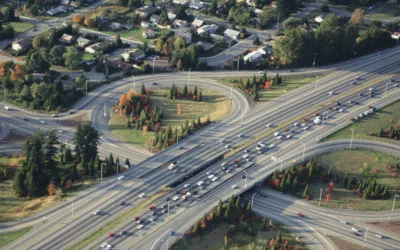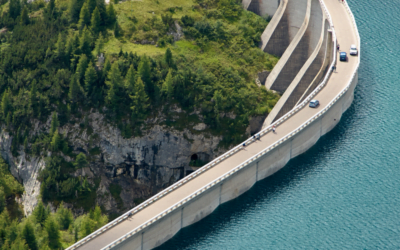Water Engineering Challenge
The Designing Buildings Wiki defines water engineering as “designing in the realm of risk.” Here, we want to explore this notion – Why, in 2017, is water engineering risky?
We take a look at the five areas of water engineering, the major risk facing all these areas and how we overcome this challenge.
The five areas of water engineering are:
- Agricultural Water Engineering
This deals with the planning, design, implementation, operation and maintenance of irrigation and drainage projects, plus land and water conservation. - Coastal Water Engineering
This branch of engineering looks at wave characteristics, coastal sedimentation, hydraulics in estuaries and general coastal engineering and management. - Urban Water Engineering
Urban water engineering is concerned with water supply and sanitation, domestic waste and urban drainage. - Water Resources Engineering
Water resources engineering looks at supplying water for human use and then removing waste. - Extreme event and risk management water engineering
Flooding is one concern of an event and risk management engineer so their job would entail river flow analysis, flood control and mitigation and flood forecasting.
The water challenge
Not gaining access to enough clean water is one of biggest risk factors facing engineers.
As a fundamental requirement of life, water is more important than food, shelter, light and warmth. Yet shockingly, 1 out of 6 people do not have access to enough water, which causes approximately 5,000 children worldwide to die every day from diarrhoea-related diseases.
The only way this will be solved is by gaining access to more clean water. As a recent U.N. report warns: “Overcoming the crisis in water and sanitation is one of the greatest human development challenges of the early 21st century.”
Fortunately, there are engineering solutions out there but the absolute necessity of water makes any project concerning it a risky one.
Why is accessing enough clean water a challenge?
For years engineers have designed ways of accessing water with the construction of wells, dams and pumps. However, with the global population rising, more water is needed and solutions need to become more and more sophisticated.
The current challenges are:
- 98% of water on this planet is seawater
And therefore, too saline to use. The remaining 2% of water is fresh but 1.6% is trapped in polar ice caps and glaciers. Leaving just 0.4% available to us. This 0.4% of useable water is found in rivers, underground, in vapour and locked within cell structures of plants. - Water pumps aren’t sustainable
According to Engineering for Change, more than 30% of handpumps have failed within 2-5 years. That means there are 250,000 dysfunctional pumps. - Agricultural irrigation consumes too much useful water
Agricultural irrigation is the method of supplying water to plants. This consumes enormous quantities of water, with irrigation often exceeding 80% of total water use in developing countries. When clean water is in limited supply, it’s simply inefficient to use 80% of it on agriculture.
How can we overcome these challenges?
Desalinate sea water
The sea has 98% of the world’s water so it makes sense to try and find a way of making this water usable. Reversing Samuel Taylor Coleridge’s line “Water, water, everywhere, nor any drop to drink”, there are now more than 12,000 desalination plants that use a method called reverse osmosis, which uses a membrane to separate the salt.
While effective, this process is expensive, uses a lot of energy and is only really good for countries near the sea. It’s not a great option for impoverished countries, where clean water is needed the most. Unfortunately, desalination won’t solve the world’s water problem, although it may go some way to help.
Holistic approach to designing sustainably
Susan Davis, the founder and executive director of Improve International, said in a QA on future proofing water systems “I think bringing the engineers’ problem-solving mindset in a holistic way could be very helpful.” So, holistically-speaking, the environment must be considered when designing sustainable water sources.
The wrong location could mean wells end up being too close to toilet areas, potentially spreading disease. Or, a water source that is hydrologically connected to another source could cause one of them to dry up.
One way to ensure your design is in the right location is Autodesk engineering software. The Autodesk suite allows you to work faster, collaborate and see mock ups of your design, which means you can see how sustainable they are before any construction work has started, and improve them if necessary.
This can, and should, be used throughout the development of a project to improve performance and manufacturability at every step. Take a look at our Baker Baynes’ design cycle to really see how simulation can help.
Introduce drip irrigation
The demand for agricultural water is high but water efficiency is low. However, there is a solution to this: drip irrigation. This type of irrigation delivers water to crops drop by drop which means there’s no risk of water evaporating as it goes straight to the soil and only waters the part of the plant that actually needs it – the root. Overall, the benefits of drip irrigation are:
- Water efficiency
- Uniform distribution of water
- Amount of water can be regulated
- Cost of energy is reduced due to the low pressure of water
- Reduced risk of disease as foliage stays dry
If you would like more information on drip irrigation, Interesting Engineering has a detailed guide.
So, there you have it, our whirlwind look at the different types of water engineering, how access to enough clean water is the challenge that impacts them all, and the engineering technology that can overcome this challenge. If you want to learn more about civil engineering, visit our library of articles or take a look at our architecture, engineering and construction collection for some essential water engineering tools.







0 Comments